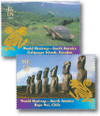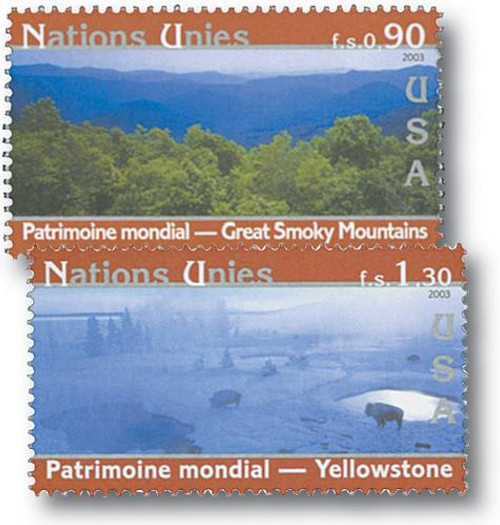
# UN941-42 - 2007 UN World Heritage Sites-S. Africa
The 2007 World Heritage stamps mark the 13th year in the series. Rapa Nui, Chile, also known as Easter Island, is represented on the 90¢ New York stamp.
Rapa Nui was given the name Easter Island in 1722 when European explorer Jacob Roggeveen arrived on Easter Sunday. The island is made up of three mostly submerged volcanoes. The statues for which Rapa Nui is most famous are called Moai. It is estimated that they were created between 1000 A.D. and 1700 A.D. The majority of these statues are made from compressed volcanic ash.
There are 887 documented statues, most of which depict an oversized head atop a complete torso. The tallest Moai is almost 33 feet tall and weighs 75 metric tons. The heaviest Moai weighs 86 metric tons.
The 2007 World Heritage stamps mark the 13th year in the series. Rapa Nui, Chile, also known as Easter Island, is represented on the 90¢ New York stamp.
Rapa Nui was given the name Easter Island in 1722 when European explorer Jacob Roggeveen arrived on Easter Sunday. The island is made up of three mostly submerged volcanoes. The statues for which Rapa Nui is most famous are called Moai. It is estimated that they were created between 1000 A.D. and 1700 A.D. The majority of these statues are made from compressed volcanic ash.
There are 887 documented statues, most of which depict an oversized head atop a complete torso. The tallest Moai is almost 33 feet tall and weighs 75 metric tons. The heaviest Moai weighs 86 metric tons.












